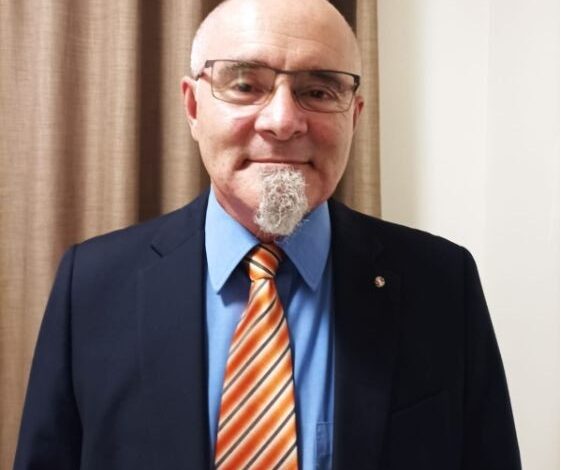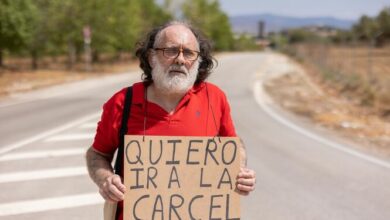André Chouk is dreaming of a right-wing France from… guess what? Algeria

André Chouk is dreaming of a right-wing France from…guess what? Algeria
If North Africa tends to be overused in the discourse of the right wing in Europe as the source of all evil, strangely, many of the European right wing voters and even candidates do live in North Africa.
This was once commented upon by a Franco-Moroccan comedian who wondered why those who eat couscous don’t like the ones who cook it.
But that’s politics. What matters at the end is technocracy and practice. Italy’s conservatives these days talk economy more than culture. They sound as passionate about the Mediterranean as about Europe and their rejection North Africans is receding in the past as a no-longer useful political tool rather than an agenda.
The French radical right has not yet had the opportunity to take power. In their discourse, Reconquête, the party of Eric Zemmour, took things further than Fratelli D’Italia and they are still doing the same as they do not find themselves manacled by the constraints of power. Therefore, we chose to focus on their political discourse now after their stunning defeat in the presidential elections through the campaign of one candidate we could be in touch with.
Mr. André Chouk is a Frenchman who lives in Algeria. These days, he’s running for the partial legislative elections from Algeria as a candidate in the constituencies of French nationals living abroad.
Le Petit Journal conducted an interview with Mr. Chouk. This interview is an opportunity to see if the right wing can go beyond cultural reductionism to more concrete matters.
Here is our translation of this interview:
“Can you introduce yourself in a few words?
I just celebrated my 63 years last February, I am remarried with a Peruvian national. This union has bestowed on us three granddaughters. I have been a civil servant, consular agent for 25 years.
Why did you want to stand in the next legislative elections?
My political career has evolved. Faithful to the French Right from the RPR to the UMP then LR, I have also learned from the German CDU and the Austrian ÖVP during my assignments in the German-speaking area. I am therefore more inclined towards social right and I share them their emphasis on entrepreneurship and meritocracy.
Éric Zemmour’s party -!Reconquête- stands for these values. It is now my turn to act by getting involved in this partial legislative election.
What is your relationship with this constituency?
I have been in Algeria in Annaba since the fall of 2021. My commitment as a citizen motivates me to take all the socio-economic challenges I encounter on a daily basis, both professional and private.
How has your career been marked by the concerns of French people living abroad?
The mission of the French consular network throughout the world is to help the French people living abroad whatever the reason for their establishment abroad. I experienced situations of uncertainty in the role of consular officer during years of professional expatriation before moving to the other side of the mirror and joining the Ministry for Europe and Foreign Affairs. These compatriots are concerned about maintaining their link with their homeland during their expatriation and also about what happens at home. French people abroad want to be informed, they want to know how their France is doing….
How do you see the mandate of deputy?
It is about putting consular services to the test and improving “citizen-administration” relations by adapting better management methods and tools. I do not want to deploy huge budget transfers to support expenses related to mismanagement.
What do you think are the challenges facing the French people in your constituency?
I think they need to make use of the knowledge and real potential of the human capital of their host country. Then need to think less French and be proactive with French elected officials: consular advisers, deputies and senators for French people living abroad. Leaving matters to the embassy and the consuls general is not the solution.
How is your campaign organized and who are your supporters?
A few weeks of campaigning are only a very short time to re-motivate teams in several countries. A development of structure and the tour throughout Tunisia define the framework of my organization at the moment.
What are the areas of work you want to carry out if you are elected?
Commitment to the law remains the adage in the administrations in France. Yes, but I also want:
– to implement a communication (video-conference of maximum 90 minutes) per quarter on what has changed in France, not only the price of a pack of cigarettes.
– be a source of proposals for the improvement of the professional training of consular officers in the hemicycle
– combat and eradicate fraud in social assistance paid to state assistance.
Finally, I want to promote the party’s policy regarding respect for the values of the Republic, in particular with regard to the working conditions of the police.” End of Interview
It seems from this interview that Mr. Chouk is more committed to technical reform of the French consular system, say an administrative reform. But in his online campaign, the commitment is rather to the usual cultural promises of the right-wing.
In his online nnouncement of his candidacy, Mr. Chouk rather inclined towards the identity politics embraced by Zemmour. The online campaign mentions strengthening the ties between the expatriate French youths and their homeland but it has the flavor of a campaign at home, addressed to people living in France who are dissatisfied with immigration. LGBTQ groups, Islamo-Leftism, and bureaucracy, which can stand as an allusion to the EU .

The discrepancy between the announcement and the campaign, on the one hand, and the interview on the other is interesting in its political underpinnings. What are they? How does identity relate to administration? Maybe the next days will tell.
Note: We contacted Mr. Chouk to verify some of the details. We are open to other candidates, commentators, politicians, expatriates or students to contest or confirm some views, or just present alternative agendas to balance our editorial line.




